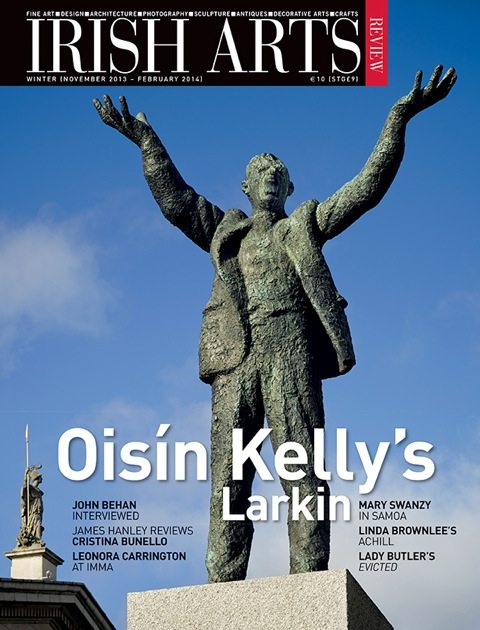

A bridge to live in? Louise Cotter visits the project in County Dublin that attracted awards from the RIAI and the AAI Downes Medal for architects Clancy Moore
Slievebawnogue is set on a wooded ridge overlooking the Glenasmole Valley in County Dublin. This is not a wild landscape but one continuously modified and tended by people. The river Dodder flows through the valley and in the 19th century this was dammed and two reservoirs as well as a series of weirs were made to supply water to the people of Rathmines and Rathgar. Stone for the project was quarried locally on the slopes of Slievebawnogue and subsequently the abandoned quarry was left to be colonized by trees and scrub. The encroaching suburbanization of Dublin’s green belt has been halted in this area by a rigorous planning regime and the cost of houses has all but excluded local families from the market. The architects’ clients, an extended family of two sisters and a brother looked to their own lands for a place on which to build. The site itself is eked out of the old quarry; its level floor allowed a rare opportunity to build in this protected landscape. The building footprint was prescribed and defined by its distance from an adjacent stream and the shadow cast by the quarry wall, while a tower was probably out of the question in planning terms. The building had also to be raised spanning across the mouth of the quarry to retain access. These strict parameters and the strong context that defined the building form in three dimensions precluded a conventional response; a rigorous structural solution was required for what was to be effectively an inhabited bridge. The orthodox expressions of front and back, roof and ground were irrelevant here; a more fundamental investigation of form and tectonic expression was called for.
The site is approached from a steep forest road winding around the ridge of the hill. The house is perched high like a tree-house spanning the rocky outcrops and substantial cantilevered concrete piers. The project is really two houses, each one composed of two pavilions set at the angles prescribed by the stream and quarry shadow (Fig 1). A flight of steps ascends to a low porch, scaled for the modular man and lined with timber in which the entrance doors are discretely concealed (Fig 8). Nobody home? We walk down to the undercroft and emerge into the quarry, which is now internalized, a natural room addressed by a tall loggia that makes a continuous screen to the living space behind (Figs 5&7). A playful arrangement of white concrete steps leads down to the quarry floor. Another straight flight of timber stairs continues on to the roof, a black felted landscape of rooflights, solar panels and satellite dishes: this will in future become the roof garden envisaged in the original design.
The roof reveals the volumetric arrangement of the houses, which each consist of a low pavilion containing the bedrooms to the north, the taller living pavilions and attached loggia address the quarry and the sun. The challenging structural problem posed by the elevated form is solved by the use of a series of glulam beams spanning the length of the pavilions (Figs 2&7). Timber decks span between and the whole is enclosed in a screen of timber posts with vertical boards inset. The architects have consciously subsumed the primary structure into a cohesive tectonic screen (in the Gottfried Semper idiom) that eschews the iconography of the ‘house’ or overtly subjective expression, although they are not averse to, say, delicately inserting a window oriel or a playful scattering of white concrete steps. The timber screen has its own innate logic and the detailing derived from Clancy’s study of historic Irish stave construction is appropriate for a humid climate. The use of timber in this way informs the scale, which is based on that of a timber board, rather than the primary structure. The black-stained finish recalls the creosoted trunks of ESB poles or railway sidings and suggests a rugged durability – the dusty cobwebs evoke a structure that has acclimatized to its setting. Its rustic patina is in contrast to the richly textured interiors, lined in limed oak and detailed with refined precision.
a rigorous structural solution was required for what was to be effectively an inhabited bridge
The internal planning strategy places bedrooms in the low pavilions with the views out from the hill (Fig 3), and living spaces in the higher volume, with a series of French doors opening on to the loggia. This basic strategy has been customized to suit the lifestyle and requirements of the occupants. One house has a traditional country kitchen, a timber lined room; the other retains the original parti of open living space with cooking island inserted. The smaller ancillary spaces lodge in the poché between front and back pavilions. Scale is employed to model space and choreograph the users’ experience as they move about the project. The houses are very much an interior world with views to the forest and beyond controlled and filtered. The quarry view is almost an interior one. In contrast the bathrooms are like outdoor spaces buried in the plan, their high glass ceilings open to the sky.
The rich context and singular execution of this project is skilfully documented by Alice Clancy whose photographs exemplify the genre of architectural photography, which has evolved to be an art form in its own right. A house will continue to evolve and change with the passing of time, a fact that Clancy Moore have understood and graciously incorporated in the design implementation. It is a framework for domestic life and all that is incidental and is not in the public domain. Photography as well as the architectural drawing is potentially an integral part of the oeuvre, which is a work of architecture. The photographs crystallize the design intent in a specific time, using particular references to place the work in a cultural context, although this may be subliminal. The photographs of the interiors, with carefully placed antique furniture have the luminosity of a Vermeer (Figs 4&5), while the views of the loggia with the architect peering out (a favourite device in Leon Krier’s drawings for James Stirling) demonstrate a sense of scale and refer to authorship in an image that is almost surreal (Fig 8).
The houses at Slievebawnogue are a particular and unique response to this site and its context as well as being a rigorous manifesto of Clancy Moore’s interest in materiality. Alvaro Siza’s famous aphorism comes to mind: ‘architects don’t invent anything they transform reality’.
Photography ©Alice Clancy
Louise Cotter is a partner with Carr Cotter & Naessens, Cork.
From the IAR Archive
First published in the Irish Arts Review Vol 30, No 4, 2013



